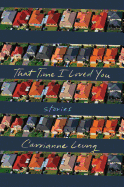
The 10 stories in Carrianne Leung's collection, That Time I Loved You, all take place in the same sparkling new subdivision outside Toronto. The subdivision is composed of parallel and perpendicular streets that make neat square blocks. The houses are "almost carbon copies of each other," divided by fences on which adults leaned to discuss the suicides of 1979: Mr. Finley, a local softball coach; Mrs. Da Silva, who spoke to flowers; Janine Bevis, the woman who'd seemed so happy; Larry Lem's father, who was terrible to Larry Lem.
The suicides thread through each story, sometimes subtly and sometimes front and center, giving the collection a backdrop that reveals the messes and imperfections hidden away behind the outwardly perfect suburban façade of each perfect block. In "Fences," a childless housewife finds herself drawn to the stay-at-home dad next door. Middle school-aged June, daughter of Chinese immigrants, observes the racism and fear packed into her small neighborhood's world in "Grass," and again in "Sweets." The neighbors discover a magpie-like thief in their midst in "Treasure."
Though each story in That Time I Loved You can stand alone, they are cleverly interconnected. Secondary characters become primary ones; events alluded to in one story are fully explained in another; a child's interpretation of a strange occurrence is retold through adult eyes later on. The effect mirrors subtly yet precisely the feeling of living in a close suburban neighborhood: that of lives stacked atop one another, entirely separate and walled off and yet closely intertwined by both proximity and culture. --Kerry McHugh, blogger at Entomology of a Bookworm

